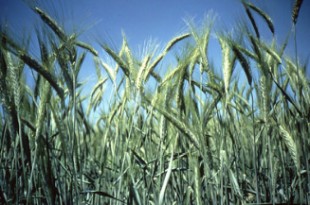 Globally, grain prices appear to be trending gradually upward with the UN’s FAO Cereal Price Index—which tracks world prices for wheat, maize, rice and barley—up by 1.5% in November from the month before, although it is notable that the 2023 average level for the same index was 15.4% below the 2022 average (albeit a year with historically elevated commodity prices). European Union soft wheat production is predicted by Strategie Grains to fall slightly by 1% YoY in 2024 to 124.8 Mt (from 2023’s 125.9 Mt). On the other hand, the analysts expect to see EU barley output to rise by 11% YoY this year to 52.7 Mt (despite a 0.8% YoY drop in winter barley sowings). The European Commission recently raised its forecast for usable production of EU maize for the 2023/24 season to 61.4 Mt (from an earlier 59.9 Mt made a month prior). This would be 15.6% above the previous season’s output, a period in which drought conditions adversely affected much of the EU maize crop, but nonetheless still 10.8% below the five-year average.
Globally, grain prices appear to be trending gradually upward with the UN’s FAO Cereal Price Index—which tracks world prices for wheat, maize, rice and barley—up by 1.5% in November from the month before, although it is notable that the 2023 average level for the same index was 15.4% below the 2022 average (albeit a year with historically elevated commodity prices). European Union soft wheat production is predicted by Strategie Grains to fall slightly by 1% YoY in 2024 to 124.8 Mt (from 2023’s 125.9 Mt). On the other hand, the analysts expect to see EU barley output to rise by 11% YoY this year to 52.7 Mt (despite a 0.8% YoY drop in winter barley sowings). The European Commission recently raised its forecast for usable production of EU maize for the 2023/24 season to 61.4 Mt (from an earlier 59.9 Mt made a month prior). This would be 15.6% above the previous season’s output, a period in which drought conditions adversely affected much of the EU maize crop, but nonetheless still 10.8% below the five-year average.
EU forecasts for soft wheat output were modestly upgraded to 125.7 Mt (up 0.1 Mt from a month before) with export projections for the same remaining unchanged at 31.0 Mt for the season. EU production forecasts for the current season were also revised from the previous month for barley, rapeseed and sunflower seed (SFS), respectively, to 47.3 Mt (+0.4 Mt), 19.8 Mt (-0.1 Mt) and 10.2 Mt (-0.2 Mt). Following unfavourably rainy conditions, Germany’s national statistics agency said that domestic farmers have reduced winter sown area for 2024 for wheat and rapeseed to 2.60 Mha (-7.3% YoY) and 1.11 Mha (-4.7% YoY). Rainfall in Germany has been so severe that inland shipments from Germany to Switzerland had to be suspended on the Rhine River at the beginning of the year. New reforms on EU farming subsidies have also made wheat production less attractive for German farmers, said the statistics agency. Germany is the EU’s second-biggest wheat producer as well as one of its biggest rapeseed producers. French sowing area was also recently reduced, according to new statistics, with sown area for 2024 soft wheat down to 4.24 Mha or its lowest since at least 2000. The French farm ministry also blamed unfavourable rainfall for the reduced sowing area. Some of France’s growing areas have seen extreme reductions in sowing area such as Nouvelle Aquitaine in the Southwest where rains have led to an estimated area reduction of 29% YoY. Analysts at ING say the global wheat balance should expect another deficit through the 2023/24 season with global ending stocks forecast to decline by 4% YoY to just below 259 Mt, the fourth annual decline in a row and the lowest level since the 2015/ 16 season. If Chinese inventories are taken out (52% of the world total), ING says global wheat stocks will be at their lowest since the 2008/09 season. Within Europe, wheat markets remain highly competitive with Western European producers fighting to compete with abundant, lower-priced Black Sea grain from Russia and Ukraine, among others. Benchmark contracts for March milling wheat opened the week 0.3% down to EUR 220.5/mt on the Euronext exchange in Paris. Analysts note that front-month positions for EU wheat contracts were down 28% YoY in 2023 after gaining for the three consecutive preceding years. Among other competitive factors for EU wheat versus Black Sea wheat is the recent rally of the euro to a five-month high against the US dollar. This has also reduced the attractiveness of euro-priced wheat from the EU against the commonly USD-denominated grain from Black Sea producers.
For exclusive news and updates about dry bulk shipbroking, subscribe to the BMTI Daily Report.

